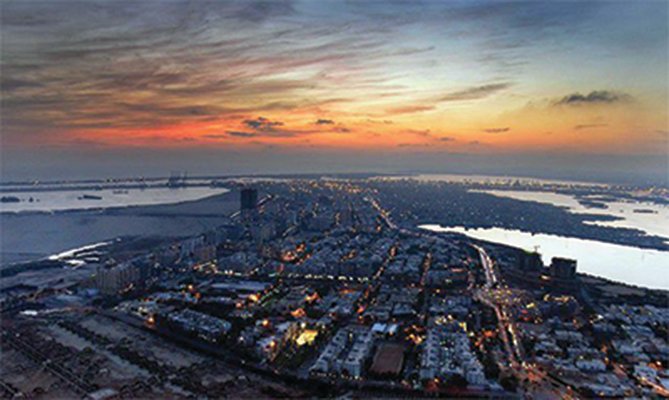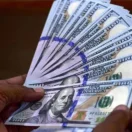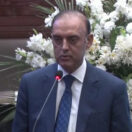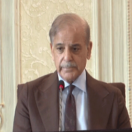By Shahbaz Rana
Published in The Express Tribune on May 19, 2022
ISLAMABAD: Fueled by imports and consumption, Pakistan’s economic growth rate accelerated to 6% during the last year of Imran Khan’s government – the highest pace in four years – helping to increase the size of the nation’s economy to $383 billion besides jacking up per-capita income.
The provisional Gross Domestic Product (GDP) growth rate for the year 2021-22 is estimated at 5.97%, announced the Planning Ministry after a meeting of the National Accounts Committee. The broad-based growth was witnessed in all the sectors of the economy, it added. The GDP is the monetary value of all goods and services produced in a year.
The nearly 6% growth rate is higher than the official target of 4.8% and far higher than the estimates of the Ministry of Finance, State Bank of Pakistan, International Monetary Fund, World Bank and the Asian Development Bank.
The figure is provisional and subject to variations once the final results are available at the end of the fiscal year. The economic growth rate during the last two years of the PTI rule was slightly better than the PML-N’s last two years but both the governments failed to address structural problems of Pakistan’s economy.
An attempt had been made to downplay the growth figures in the last year of the PTI government but the authorities dropped the plan after a report appeared in The Express Tribune.
I have asked the Pakistan Bureau of Statistics to certify that the methodology to work out the GDP growth was consistent with the past, said the Planning Ministry secretary in-charge Dawood Barech.
He maintained that the Planning Minister Ahsan Iqbal did not influence the NAC proceedings.
The details showed that the massive surge in imports and consumption greased the economic growth rate, which has already triggered a serious external sector crisis – an identical pattern witnessed in 2018 when the country fell in the lap of the International Monetary Fund.
The 6% growth rate at the end of the Pakistan Tehreek-e-Insaf government was the highest in four years. Last time, the country attained a 6.1% growth rate in 2017-18 – the last year of the PML-N rule, which had also been driven by consumption and imports and took the country back to the IMF.
During 2017-2018 and 2021-2022, Pakistan’s growth was largely financed through foreign savings, which is highly unsustainable.
The agriculture sector is provisionally estimated to grow by 4.4%, nearly 1% better than the previous year. On the back of the Large Scale Manufacturing sector, the industrial sector grew at the rate of 7.2%, lower than the previous fiscal year. The growth in the services sector was slightly better than the previous fiscal year, standing at 6.2%. The mining sector witnessed contraction.
Had the annual imports remained at the projected level of $55 billion in this fiscal year, the overall economic growth rate would have remained around 5%, according to a senior official of the Planning Ministry. The better crop production also supported the higher growth, except for wheat whose output decreased by one million metric tons to 26.4 million metric tons.
The size of the economy reached nearly Rs67 trillion in 2021-22 – about Rs3 trillion higher than the estimates, which will also help the government to get additional fiscal spending space. In dollars terms, the volume of the economy in 2021-22 stands at $383 billion, according to the Planning Ministry.
Similarly, the per capita income that had been estimated at $1,676 in the last fiscal year increased to $1,798 –a surge of $122 or 7% per person. In rupee terms, per capita income jumped from Rs268,223 in 2020-21 to Rs314,353 in 2021-22.
The NAC also revised the economic growth rate upward for the second last year of the PTI government from 5.6% to 5.7%. The final growth rate of GDP for the year 2019-20 contracted 0.94%.
Agriculture
The growth of important crops during this year is 7.24% -significantly better than last year. The growth in production of important crops namely cotton, rice, sugarcane and maize are estimated at 17.9%, 10.7%, 9.4% and 19.0% respectively.
The cotton crop increased from 7.1 million bales reported last year to 8.3 million but remained shy of the target of 10.5 million bales. Rice production increased from 8.4 million tons to 9.3 million tons; sugarcane production increased from 81 million tons to 88.7 million tons; maize production increased from 8.4 million tons to 10.6 million tons respectively.
Other crops showed growth of 5.4% mainly because of an increase in the production of pulses, vegetables, fodder, oilseeds and fruits. The livestock sector is showing a growth of 3.26%. The growth of forestry is 3.13% and fishing is at 0.35%.
Industrial sector
The overall industrial sector showed an increase of 7.2 –lower than the previous fiscal year. The mining and quarrying sector has contracted by 4.5% due to a decline in the production of other minerals as well as a decline in exploration costs.
The Large Scale Manufacturing industry is driven primarily by QIM data, which showed an increase of 10.4%. The value-added in the construction industry, mainly driven by construction-related expenditures by industries, has registered a modest growth of 3.1% mainly due to an increase in general government spending. This is despite the fact that former Prime Minister Imran Khan had heavily focused on the construction sector and gave two tax amnesty schemes.
Services
The services sector showed a growth of 6.2, marginally better than the last year. The wholesale and Retail Trade industry grew by 10% -lower than the previous fiscal year. It is dependent on the output of agriculture, manufacturing and imports.
The transportation and Storage industry has increased by 5.4% due to an increase in gross value addition of railways (41.85%), air transport (26.56%), road transport (4.99%) and storage.
Whereas, accommodation and food services activities have increased by 4.1%. Similarly, Information and communication increased by 11.9% due to improvements in telecommunication, computer programming, consultancy and related activities.
The finance and insurance industry showed an overall increase of 4.93% mainly due to an increase in deposits and loans but the rate was slower than the previous fiscal year. Real estate activities grew by 3.7% while public administration and social security (general government) activities posted negative growth of 1.23% due to high deflators.
Education has witnessed a growth of 8.65% due to public sector expenditure. Human health and social work activities also increased by 2.25% due to general government expenditures. The provisional growth in other private services is 3.76%.






